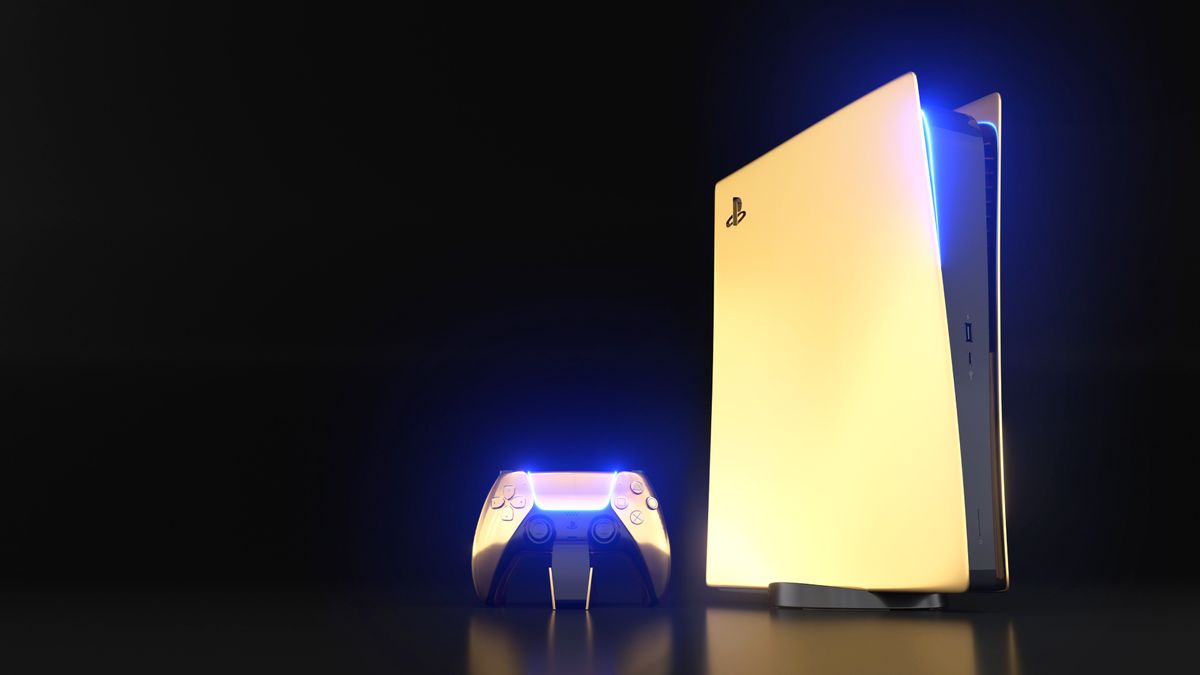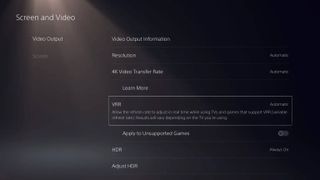
Variable refresh rate (or VRR, for short) has been a much-requested feature for PS5 ever since the console launched back in November, 2020. Especially since Sony’s flagship console already checks the boxes for so many premium features, including 120Hz support, raytracing capabilities and the sublime haptic feedback and adaptive triggers courtesy of the DualSense controller.
VRR was curiously absent on PS5, then, and even we were baffled by its original omission, especially considering both Xbox Series X and Xbox Series S wholeheartedly support the feature. Thankfully, though, VRR’s omission is now a thing of the past. The display technology is is now available on PS5, and Sony has announced a list of games that will receive official VRR support.
If you own a PS5 and are wondering what all the fuss is about surrounding VRR, then, we’ve prepared a guide explaining exactly what it is, how it will affect your PS5 games, as well as which titles support the feature. Read on to learn everything you need to know about PS5 VRR.
What is VRR?

Variable refresh rate is an increasingly common feature supported by many of the best TVs, and allows for a much smoother on-screen gaming experience. The feature is a solution to screen tearing, which occurs when your TV’s image refresh rate is out of sync with the game you’re playing.
Have you ever noticed a section of the image lag behind another, as if it’s been sliced in half, whenever you adjust the camera angle? That’s screen tearing in action, and it’s what variable refresh rate can eliminate entirely.
PS5 VRR will achieve this by syncing your TV’s display to the console’s output, effectively stopping screen tearing from happening without a hit to overall performance. Before variable refresh rate became more of a standard feature, one of the best ways to solve screen tearing was through a V-sync (vertical sync) option. V-sync achieves more or less the same results as variable refresh rate, with the caveat that it’s reliant on your hardware. As such, enabling vertical sync comes with a heavy hit to overall performance.
It’s not just screen tearing that PS5 VRR will solve, though. Another great benefit of the feature is that it’ll help to clean up games with frequent stuttering or those that are prone to frame drops for a smoother, more consistent experience. That’s a huge win for massive titles like Horizon Forbidden West or Elden Ring, where performance can buckle under the weight of those enormous open worlds. With VRR, you’ll barely notice when a game’s frame rate falls below its 60fps target.
Get daily insight, inspiration and deals in your inbox
Sign up for breaking news, reviews, opinion, top tech deals, and more.
Thankfully, variable refresh rate is now a standard feature with HDMI 2.1 cables, one of which is packed in with brand new PS5 consoles. If you have a TV that’s built with HDMI 2.1-ready ports, then you're already fully equipped to make use of PS5 VRR – though it’s best to check whether your display supports the feature
If you’re interested in learning more about variable refresh rate beyond this summary, our comprehensive ‘What is VRR?’ guide contains everything you need to know about the display technology.
How to enable PS5 VRR

PS5 VRR is finally here on Sony's flagship console. It's actually come much sooner than expected, with the company initially announcing via the official PlayStation blog that the feature was to be made available months from now. Instead, the much-requested feature is available to try on certain games right now.
Sony has also released a list of games that are set to receive official VRR support. It's a relatively small list right now, but you can expect most – if not all – first-party PS5 exclusives to get the upgrade eventually, alongside several third-party games, some of which have already announced VRR support. You can see the full list of supported games below.
In the case of official VRR support, a patch will be required on a per-game basis, which isn’t ideal. However, Sony has noted that future PS5 releases may support variable refresh rate at launch, so there’ll be no need for an update in these cases.
Thankfully, there's so system update that needs to be downloaded, but you may need to restart your console for PS5 VRR to appear in the Settings menu. It can then be enabled by going into Settings and heading to the Video Output submenu within Screen and Video. The option can be toggled to on, off, or set to automatic, which will apply VRR straight away for all supported games.
Interestingly, Sony has also included a toggle to apply PS5 VRR to unsupported games. Not every game will receive a tailor-made patch to support VRR, but this option means you can brute-force variable refresh rate at a system level, which should hopefully benefits numerous unsupported PS5 and PS4 games.
Sony notes that enabling this option “may improve video quality for some games,” but also warns that unexpected visual effects may occur as a result. Either way, it’s fantastic to see that PS5 VRR isn't limited to just a select few titles, even if those titles will likely perform better than unsupported ones. Of course, if you do encounter any odd visual anomalies when using this setting, you can always turn it off.
VRR is an exciting addition to PS5, then, and comes after Sony recently added auto low latency mode (or ALLM) to its console. The one omission from PS5’s display features that still stings, though, is the lack of 1440p support. Connect a PS5 to a 1440p monitor, and you’re stuck at 1080p, which means gamers are missing out on 43.75% more detail than they should be. With 1440p monitors being one of the most adopted display resolutions in the market, it’s a noticeable oversight from Sony that the PS5 can’t natively output games at this resolution.
Still, that doesn’t take the shine of PS5 VRR support, and we’ll be updating this guide with our full findings and compatible games as they continue to roll out.
PS5 VRR: officially supported games
Sony has announced an initial list of PS5 games that will officially support VRR display technology. That means that the following games will receive bespoke support for the feature, meaning that they'll hopefully have VRR implemented without any blemishes or shortcuts taken.
More games are sure to follow, too, with the list below not including games that developers have announced VRR support for themselves (for example, Arkane Studios has announced that Deathloop now has VRR support, which wasn't included in Sony's initial list).
The PS5 games that support VRR, as of now, are as follows:
- Astro's Playroom
- Call of Duty: Vanguard
- Call of Duty: Black Ops Cold War
- Deathloop
- Destiny 2
- Devil May Cry 5 Special Edition
- DIRT 5
- Godfall
- Marvel’s Spider-Man Remastered
- Marvel’s Spider-Man: Miles Morales
- Ratchet & Clank: Rift Apart
- Resident Evil Village
- Tiny Tina's Wonderlands
- Tom Clancy's Rainbow Six Siege
- Tribes of Midgard
How to change your PSN name | How to turn off adaptive triggers and haptic feedback | How to enable PS5 3D audio for TV speakers | How to upgrade PS5 internal SSD storage | How to clear the cache on PS5 | How to turn off a PS5 | How to use a PS4 controller on PS5

Rhys is TRG's Hardware Editor, and has been part of the TechRadar team for more than two years. Particularly passionate about high-quality third-party controllers and headsets, as well as the latest and greatest in fight sticks and VR, Rhys strives to provide easy-to-read, informative coverage on gaming hardware of all kinds. As for the games themselves, Rhys is especially keen on fighting and racing games, as well as soulslikes and RPGs.
Most Popular

